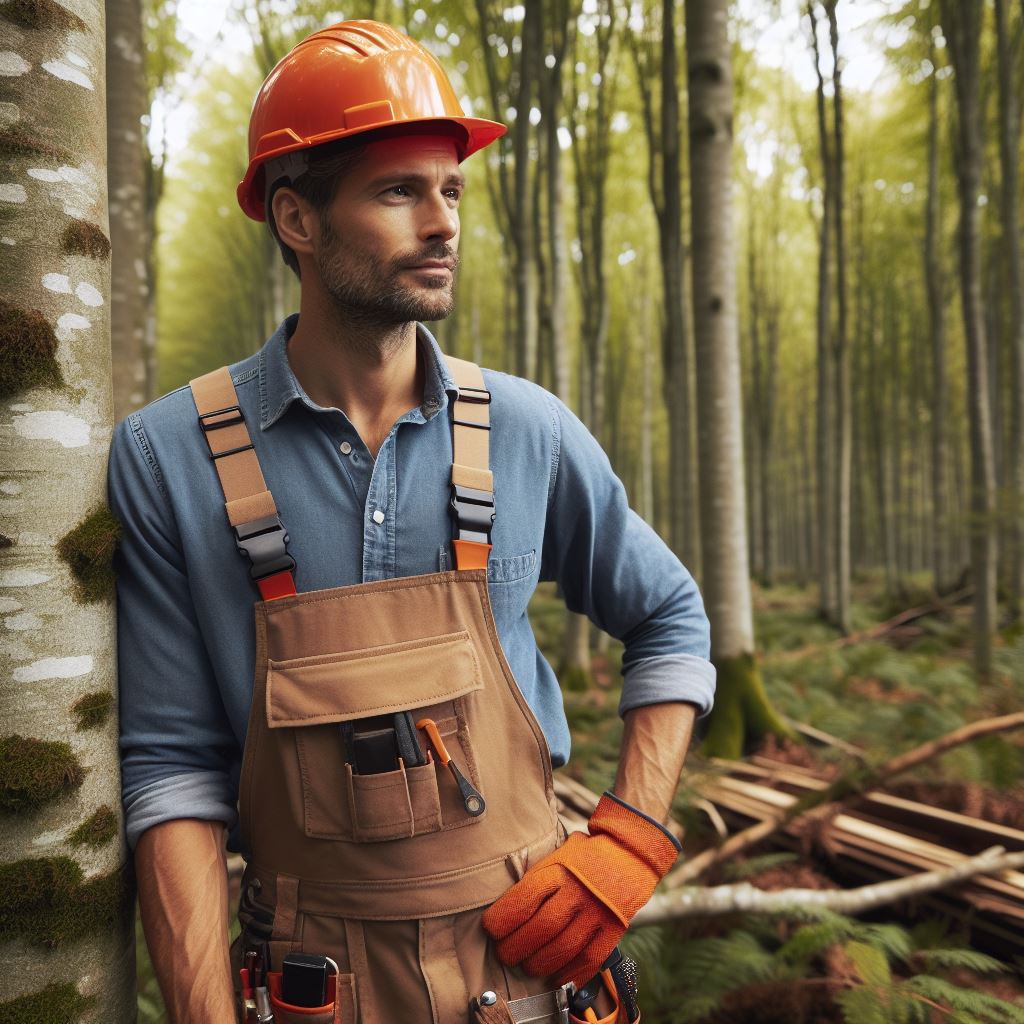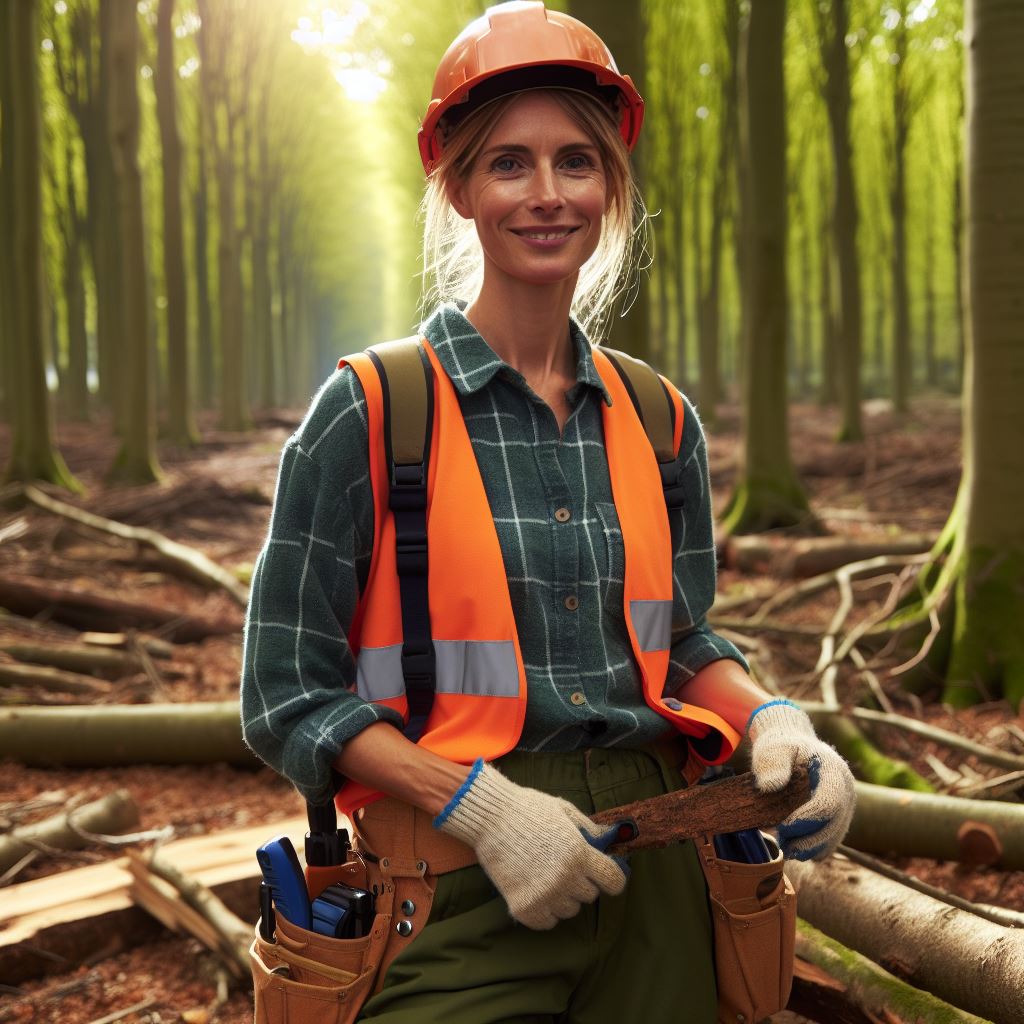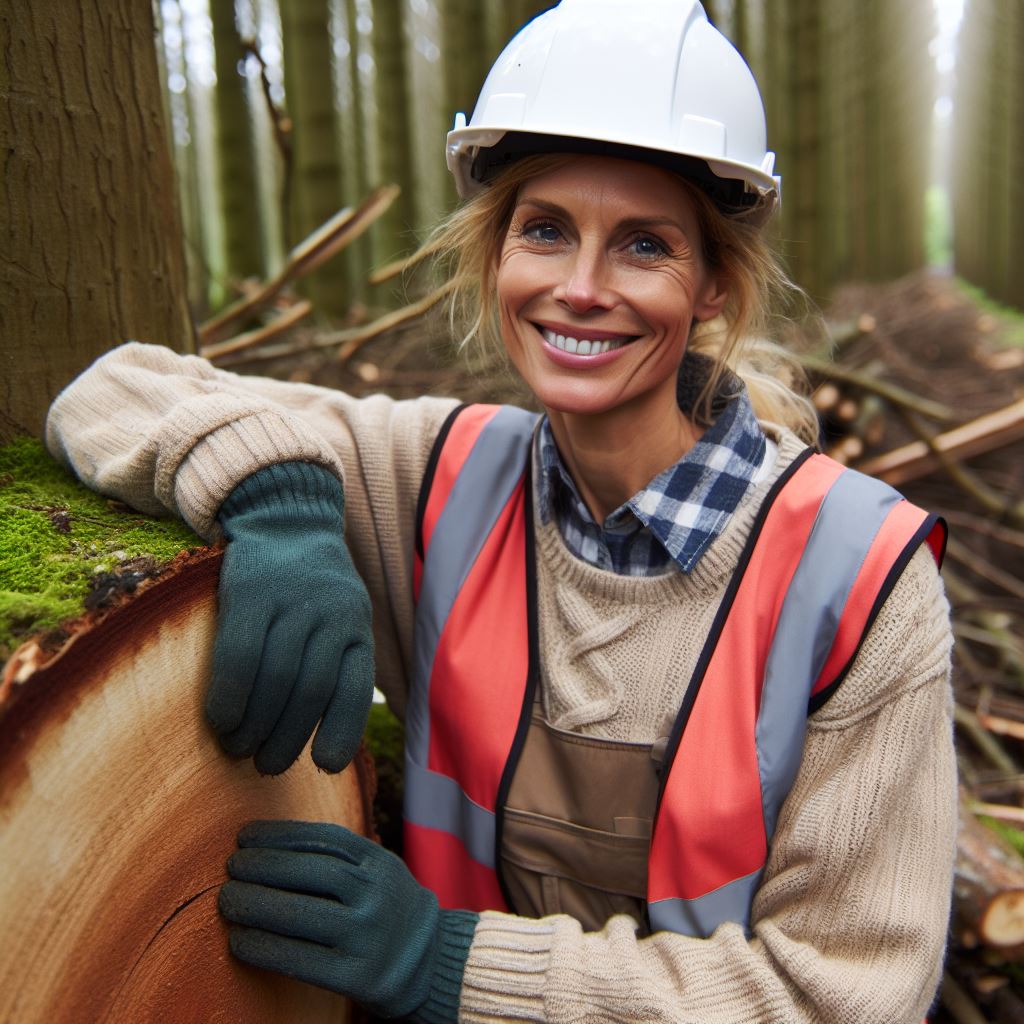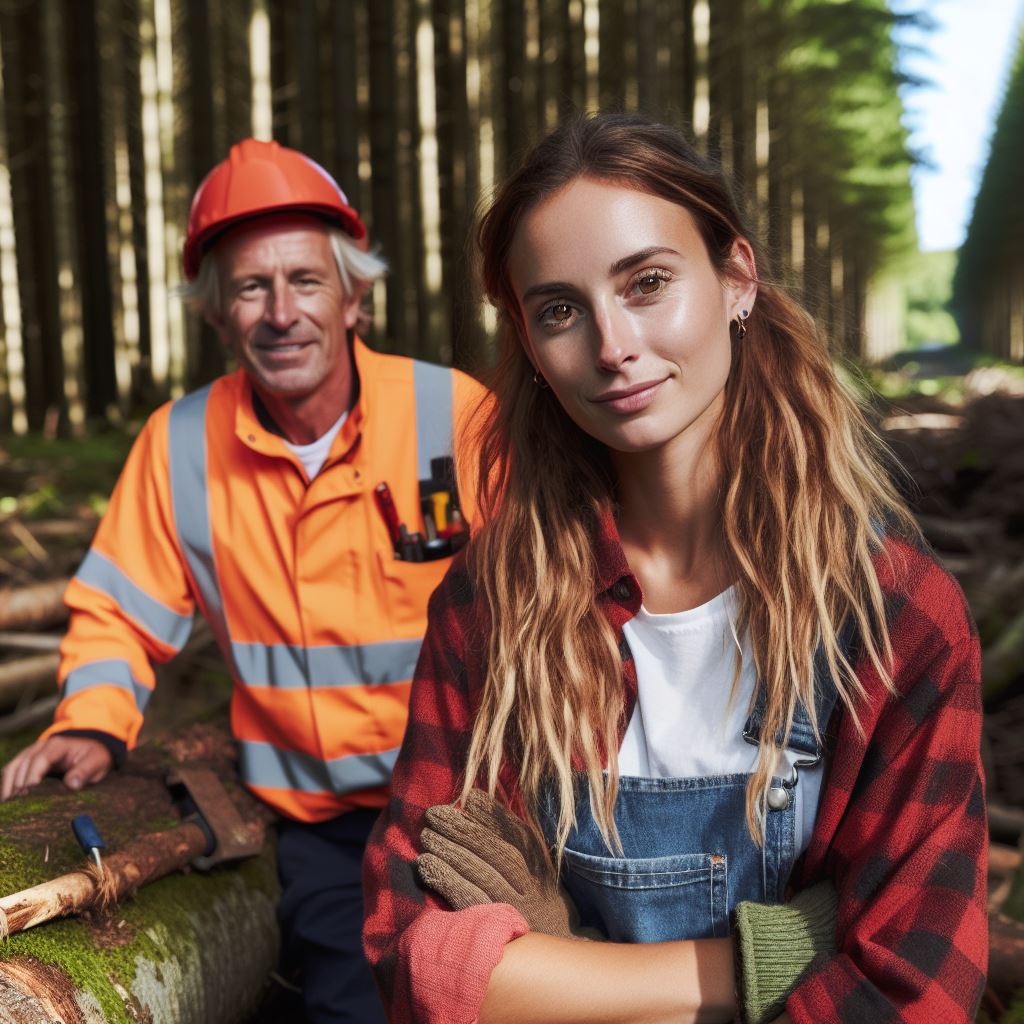Introduction
Urban forestry is the practice of managing and caring for trees in cities. It involves the planting, pruning, and maintenance of trees.
Urban forestry is important as it provides numerous benefits to cities and their residents.
Trees in urban areas help improve air quality, reduce the urban heat island effect, and provide wildlife habitat.
The growing trend and interest in urban forestry can be attributed to the recognition of its multiple benefits.
Cities are now realizing the importance of green spaces and are investing in tree planting and maintenance programs.
Urban forestry not only enhances the aesthetic appeal of cities but also contributes to the overall well-being of its inhabitants.
With increasing urbanization and the need for sustainable development, urban forestry has become an essential aspect of city planning.
By integrating trees into the urban landscape, we can create healthier and more livable cities for future generations.
The future of urban forestry looks promising as more cities prioritize tree planting and maintenance.
Urban forestry plays a crucial role in improving the quality of life in cities and shaping the future of urban landscapes.
Benefits of Urban Forestry
Urban forestry refers to the management and care of trees and green spaces within urban areas.
It plays a crucial role in enhancing the overall quality of life in cities.
By actively promoting the growth and preservation of trees, urban forestry offers a wide range of benefits that positively impact the environment, society, and economy.
Environmental Benefits
- Improving Air Quality: Trees act as natural air filters, absorbing harmful pollutants and releasing oxygen, thereby reducing air pollution levels.
- Enhancing Water Quality: Urban forests help prevent erosion and filter rainwater, improving the quality of water in rivers, streams, and underground aquifers.
- Reducing Pollution: Trees absorb carbon dioxide, a greenhouse gas responsible for climate change, mitigating its impact and improving the overall air quality.
Social Benefits
- Enhancing Well-being: Research has shown that exposure to nature and green spaces, including urban forests, can improve mental health and reduce stress levels.
- Providing Recreational Spaces: Urban forests offer opportunities for outdoor activities such as walking, jogging, picnicking, and wildlife observation, promoting a healthier lifestyle.
- Promoting Community Cohesion: Green spaces provide a platform for community interactions and social gatherings, fostering a sense of belonging and unity among residents.
Economic Benefits
- Increasing Property Values: Properties located near urban forests or with a view of trees have been found to have higher market values, attracting potential homebuyers and investors.
- Reducing Energy Consumption: Trees provide shade, reducing the need for air conditioning during summer months and consequently lowering energy costs for nearby buildings.
- Boosting Tourism: Well-maintained urban forests serve as tourist attractions, attracting visitors and generating revenue for local businesses.
Generally, urban forestry offers numerous benefits that are vital for the sustainable development of cities.
By recognizing the importance of trees and green spaces within urban environments, we can create healthier, more livable, and economically thriving cities for both present and future generations.
Challenges and issues in urban forestry
Address challenges in urban forestry, managing and planting trees in cities, to secure our urban future.
Limited space and planning constraints, maintenance and management of urban trees, and the impact of climate change are among the key concerns. Let’s delve into each of these challenges in more detail.
Limited space and planning constraints
In densely populated urban areas, finding adequate space for greenery can be a significant challenge.
The constant pressure for urban development often results in limited space for trees and green spaces.
This constraint makes it crucial to prioritize and plan tree planting initiatives wisely.
Maintenance and management of urban trees
Once trees are planted, their ongoing maintenance becomes essential.
However, ensuring proper care for urban trees can be challenging due to factors like pollution, soil degradation, and limited availability of water resources.
Urban forestry programs need to address the issue of long-term tree care to promote their survival and growth.
Climate change and its impact on urban trees
The effects of climate change pose a significant threat to urban trees.
Rising temperatures, prolonged droughts, severe storms, and other extreme weather events can damage or even kill trees.
Climate resilience is crucial in urban forestry to enhance the ability of trees to withstand these changing conditions.
To overcome these challenges and effectively address the issues in urban forestry, the following strategies and approaches can be adopted
Innovative tree planting methods
With limited space, adopting innovative tree planting methods can maximize greenery in urban areas.
Techniques like vertical gardens, rooftop gardens, and tree planting in confined spaces can help overcome space constraints.
Green infrastructure planning
Integrating trees and green spaces into city planning is essential.
Incorporating green infrastructure, such as parks, urban forests, and tree-lined streets, allows for the expansion of urban forestry programs while meeting urban development needs.
Collaboration and community engagement
Engaging the local community and gaining their support is vital for the success of urban forestry initiatives.
Communities can actively participate in tree planting, maintenance, and monitoring, fostering a sense of ownership and care for urban trees.
Personalized UK Career Consulting
Receive tailored career guidance designed just for you. Get actionable steps and expert support to boost your career in 1-3 days. Take control of your career now.
Get StartedImproved maintenance and management
Efficient management and maintenance systems are crucial to ensure the longevity and health of urban trees.
Regular tree inspections, soil improvement, proper watering techniques, and pest management can help mitigate the challenges faced by urban trees.
Climate-resilient tree species selection
Planting climate-resilient tree species that can withstand adverse conditions is key to the survival of urban forests.
Choosing species with higher heat tolerance, drought resistance, and disease resilience can enhance the adaptability of urban forests in the face of climate change.
In general, urban forestry faces diverse challenges, including limited space, maintenance and management issues, and the impacts of climate change.
By adopting innovative methods, integrating green infrastructure, engaging communities, and choosing resilient tree species, we can build sustainable, green cities.
Embracing the importance of urban forestry is crucial for the well-being of both our urban environment and its inhabitants.
Read: UK Farming Subsidies: Understanding the Basics
Initiatives and strategies for successful urban forestry
Urban forestry plays a crucial role in enhancing the quality of life in cities and promoting environmental sustainability. To ensure successful urban forestry, various initiatives and strategies need to be implemented:
Urban tree-planting programs and initiatives by local governments
- Local governments should establish tree-planting programs to increase urban greenery.
- These initiatives should focus on planting native tree species that are well-suited to the local climate.
- Regular maintenance and monitoring of planted trees are necessary for their survival and growth.
Community involvement and engagement in urban forestry projects
- Engaging citizens in urban forestry initiatives enhances their sense of ownership and connection to the community.
- Communities can organize tree-planting events, where residents actively participate in planting and caring for trees.
- Conducting campaigns to educate and raise awareness among residents about urban forestry importance and their role in its success.
Utilizing green infrastructure and innovative techniques
- Green infrastructure, such as green roofs and vertical gardens, can be incorporated into urban planning.
- These initiatives help combat air pollution, reduce the urban heat island effect, and improve stormwater management.
- Innovative techniques like hydroponics and aeroponics can be employed to grow trees in limited urban spaces.
Collaborating with other stakeholders
- Partnerships with nonprofit organizations, businesses, and educational institutions can provide valuable resources and expertise.
- These collaborations can lead to the development of joint initiatives and the sharing of knowledge and best practices.
- Stakeholders can also work together to secure funding and grants for urban forestry projects.
Incorporating urban forestry into city planning and policies
- Urban forestry should be integrated into city planning and policy documents to ensure long-term commitment.
- Ensuring that green spaces and tree planting are included in urban development projects is essential.
- Policies should also address the protection and preservation of existing urban trees to maintain biodiversity.
Monitoring and evaluation
- Regular monitoring and evaluation of urban forestry projects are crucial for assessing their effectiveness.
- Data collection on tree survival rates, canopy cover, and benefits provided by urban trees can inform future strategies.
- Feedback from the community and stakeholders should be considered to make necessary improvements and adjustments.
Essentially, urban forestry’s success hinges on planting trees, engaging communities, utilizing green infrastructure, collaborating with stakeholders, incorporating policies, and monitoring.
By implementing these strategies, cities can create a sustainable and green future for their residents.
Read: The Evolution of Fishing in the UK: A Journey

Case studies of successful urban forestry projects
Urban forestry is an emerging field that focuses on the management of trees and green spaces in urban areas.
It recognizes the importance of trees in improving the quality of life in cities, and seeks to promote their preservation and expansion.
In recent years, there have been several successful urban forestry projects that serve as inspiring examples for other cities to follow.
This blog section will explore three case studies of such projects: the Highline in New York City, Million Trees LA in Los Angeles, and Singapore’s Garden City vision.
Highline in New York City
A public park, the Highline, repurposes a historic freight rail line elevated above Manhattan’s West Side streets. It has transformed a once abandoned and derelict space into a vibrant green oasis.
The park features an extensive planting of trees, shrubs, and perennials, creating a unique and diverse urban forest.
It has become a beloved destination for New Yorkers and tourists alike, providing a peaceful retreat amidst the hustle and bustle of the city.
Million Trees LA in Los Angeles
The city of Los Angeles launched Million Trees LA, aiming to plant one million trees by 2025.
The project aims to increase the city’s tree canopy, providing numerous environmental benefits such as improving air quality, reducing the urban heat island effect, and promoting biodiversity.
Million Trees LA has successfully engaged the community in planting and caring for trees, fostering a sense of ownership and pride in the city’s green spaces.
Singapore’s Garden City vision
Singapore, often referred to as the Garden City, has long recognized the value of greenery in urban areas.
The city-state has implemented a comprehensive urban forestry program that includes tree planting, green roof initiatives, and the greening of buildings.
Singapore’s commitment to urban forestry has resulted in a cityscape that is abundant with trees and lush green spaces, providing residents with a high quality of life and a strong connection to nature.
These case studies highlight the importance of incorporating trees and green spaces into urban planning.
They demonstrate the numerous benefits that urban forestry can bring, not only for the environment but also for the overall well-being of city dwellers.
Trees in urban areas help mitigate the impacts of climate change by absorbing carbon dioxide and reducing energy consumption.
They also improve air and water quality, provide shade, and enhance the aesthetic appeal of cities.
Successful urban forestry projects require collaboration and engagement from various stakeholders, including government agencies, community organizations, and residents.
Prioritize preserving existing trees and planting diverse, climate-suited tree species to ensure environmental health.
Maintenance and care of urban forests are also crucial to ensure their long-term survival and effectiveness.
In review, urban forestry is an essential component of sustainable urban development.
The case studies of the Highline, Million Trees LA, and Singapore’s Garden City vision demonstrate the positive impact of incorporating trees and green spaces into cities.
By investing in urban forestry, cities can create healthier and more livable environments for their residents, while also contributing to global efforts in combating climate change.
It is a vision that cities around the world should embrace in order to secure a greener and more sustainable future.
Your Dream Job Starts with a Perfect CV
Get a tailored CV and cover letter that captures your unique strengths and stands out in your industry. Let us help you make an unforgettable first impression.
Get StartedRead: Modern Fishing Gear: UK Fishermen’s Toolkit
Future prospects and opportunities in urban forestry
Potential for job creation and professional growth
- Urban forestry provides a significant potential for job creation in cities around the world.
- As cities continue to grow, the demand for skilled professionals in urban forestry will increase.
- Jobs can range from tree planting and maintenance to urban planning and management positions.
- This industry offers a wide range of career opportunities for individuals passionate about environmental conservation.
- Professionals in urban forestry can expect growth and advancement as cities prioritize greener and more sustainable practices.
Role of technology and innovation in urban forestry
- Technology plays a vital role in the future of urban forestry, enabling more efficient and effective practices.
- Sensors and monitoring devices can be used to assess tree health and optimize maintenance efforts.
- Geographic Information System (GIS) technology helps with urban forest planning and management.
- Drones can be utilized to inspect and assess trees in challenging or inaccessible areas.
- Online platforms and apps can connect residents to urban forestry programs and encourage citizen involvement.
- Innovations in tree genetics and breeding can lead to the development of urban tree species better suited for city environments.
- Urban forestry will continue to benefit from advancements in technology and innovative solutions.
Global initiatives and collaborations for sustainable cities
- Urban forestry is a global initiative aimed at creating sustainable cities.
- International collaborations can facilitate the exchange of knowledge and best practices in urban forestry.
- Organizations like the International Society of Arboriculture promote global cooperation for urban forestry advancement.
- Cities can learn from successful urban forestry projects in other parts of the world and adapt them to their own context.
- Global initiatives such as the Urban Forestry Network encourage cities to share experiences and challenges for collective learning.
- Urban forestry can play a crucial role in achieving Sustainable Development Goals, particularly regarding climate action and sustainable cities.
- Collaborations between governments, NGOs, and communities are essential for the successful implementation of urban forestry initiatives.
Overall, the future of urban forestry holds immense prospects and opportunities for job creation, professional growth, and sustainable city development.
Technology and innovation will continue to play a crucial role in enhancing urban forestry practices, making them more efficient and accessible.
Global initiatives and collaborations will enable cities to learn from each other and work towards common goals.
Urban forestry, crucial for climate change mitigation and urban well-being, gains recognition and integrates into cities globally.
Embracing urban forestry and investing in its future will bring multiple benefits for both the environment and society.
Read: UK Fishing Laws: What Every Fisherman Must Know
Discover More: Urban Arboriculture: Challenges & Rewards
Conclusion
Urban forestry plays a crucial role in cities, providing a range of benefits. It improves air quality, reduces heat island effect, and mitigates climate change impacts.
Additionally, urban forests provide habitat for wildlife, enhance aesthetics, and promote community well-being.
Looking ahead, the future potential of urban forestry is immense. As cities continue to grow and face greater environmental challenges, the need for urban forests will only increase.
They will become even more crucial in managing stormwater, reducing energy consumption, and improving overall livability.
Urban forestry will play a significant role in enhancing urban resilience and adaptation to climate change.
Trees can act as natural barriers, protecting cities from extreme weather events, such as storms and floods.
They also help reduce urban noise pollution and improve mental health, contributing to healthier and happier communities.
To fully realize the potential of urban forestry, cities must invest in proper planning, management, and maintenance of urban forests.
This includes implementing tree planting programs, fostering partnerships with community groups and organizations, and developing green infrastructure strategies.
By prioritizing urban forestry, cities can create sustainable and resilient environments that benefit both people and the planet.
The future of urban forestry is bright, and its significance cannot be overstated.
It is an essential component of urban development and must be integrated into city planning to ensure a greener and healthier future for all.
[E-Book for Sale]
500 Cutting-Edge Tech Startup Ideas for 2024 & 2025: Innovate, Create, Dominate
$19.99 • 500 Tech Startup Ideas • 62 pages
You will get inspired with 500 innovative tech startup ideas for 2024 and 2025, complete with concise descriptions to help you kickstart your entrepreneurial journey in AI, Blockchain, IoT, Fintech, and AR/VR.




